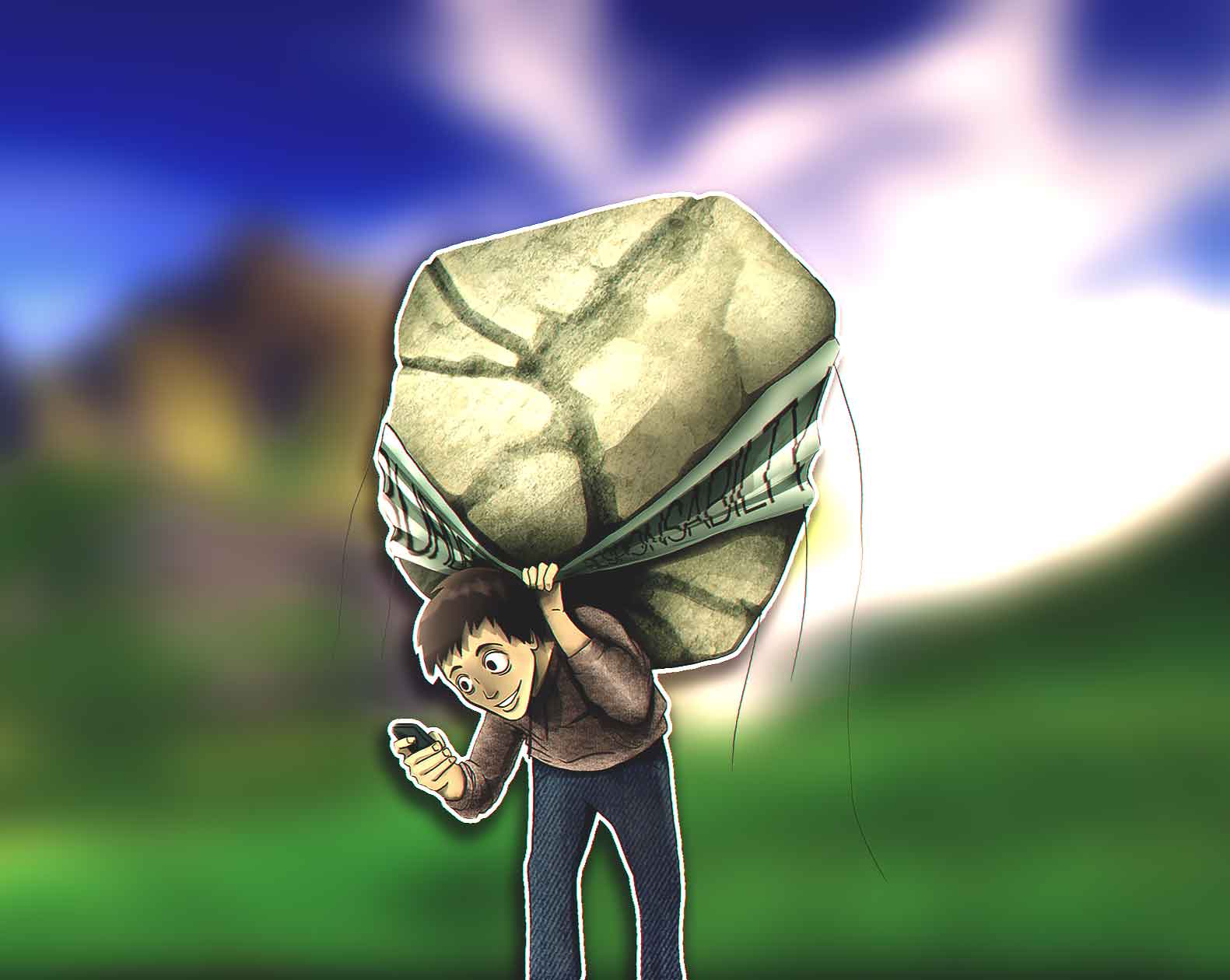By Katie Stobbart (The Cascade) – Email
Print Edition: February 25, 2015

Perched naked on a stone, the thinker leans forward; eyes, forehead, and shoulders all focused on the same invisible object of contemplation. These days the object of such laborious focus is often more tangible: think laptops, cell phones, handouts, final essays in progress after a sleepless night of study in vain.
None of the viewbooks tell you how bad university can be for your back. By the time we get here, in fact, the damage may already have been done in the years of similar but perhaps less intense slouching over schoolwork, and portaging said schoolwork to and from home.
Back pain is not just in your back
The term “back pain” seems self-explanatory: pain in your back. However, symptoms of back pain may not always be isolated to that area of the body. General health information pages on both Western University (UWO) and McGill’s websites list several indicators you should have a doctor examine your back — and only three of them are directly associated with the back of your torso.
Obviously, if you’re having persistent pain in your back, that’s back pain. But you may also need to consider your back if you’re having bowel or bladder problems (including blood in the urine) or leg pain below the knee.
According to the McKinley Health Centre at the University of Illinois, poor posture can result in a number of other pains, not just in the back but in the head, neck, shoulders, elbows, wrists, and hands — even your fingers and toes.
The student “hunch”
Poor posture is a significant contributor to back problems and pain. At the risk of blaming “technology these days,” modern gadgets don’t exactly promote a straight back. Furthermore, students have the added slouch susceptibility of long-term poor seating; classroom chairs notoriously provide little to no lower back support.
Faced with an ergonomically lacking seat, the guide from the McKinley Health Centre suggests folding up your sweatshirt to act as a “lumbar cushion” as well as ensuring your feet are flat on the floor.
Essentially, this suggests mindfulness about your position. A slouch is perhaps associated with laziness because it denotes either ignorance of, or ambivalence to your own body and health, not because it results from excessive time spent seated. One would hope even a remote threat of bloody urine, let alone extreme and widespread pain, would encourage sitting “properly.”
In pursuit of pain-free posture
In a New York Times article featuring a particular approach to soothing back pain among office workers, a Silicon Valley “posture guru” Esther Gokhale describes the wrong and right back postures alphabetically.
According to the article, “Gohkale says that most Americans tend to be relaxed and slumped (think of a C-shaped spine), or arched up and tense (an S shape), the stand-up-straight style of posture that some parents demand of their children.” However, the ideal posture is as “nature intended: upright and relaxed (a tall J spine).”
As for a good sitting posture, Trinity College in Dublin has a disability services page on ergonomics in lectures with some tips: keep your back and neck upright; your shoulders relaxed, not hunched up; and the hips angled no more than 90° from the body (“when the hips are at 60°, it puts less strain on the lower back to maintain the natural curves”). Again, there should also be lower back support.
Relief and prevention of back pain symptoms
If back pain or associated symptoms are prolonged or extreme, you should see your doctor or naturopath. UWO lists rest, ice or heat, massage, and medication as self-treatment options for back strain.
For regular discomfort and posture improvement, stretching can be a good way to keep your back limber and healthy, as long as they don’t exacerbate pain. More tips from UWO health services include knee-to-chest stretching, pelvic tilt, and hip rolling. Their page is one of the more comprehensive university health pages on back pain and posture, and is worth looking into for further advice on how you can aim for good posture while lifting, standing, sitting, sleeping, and even having sex. (A good rule of thumb might be to avoid doing something you wouldn’t want to explain to the paramedic.) Ultimately, the idea is not to be paranoid, but to be mindful of what the natural position of your back should be.


